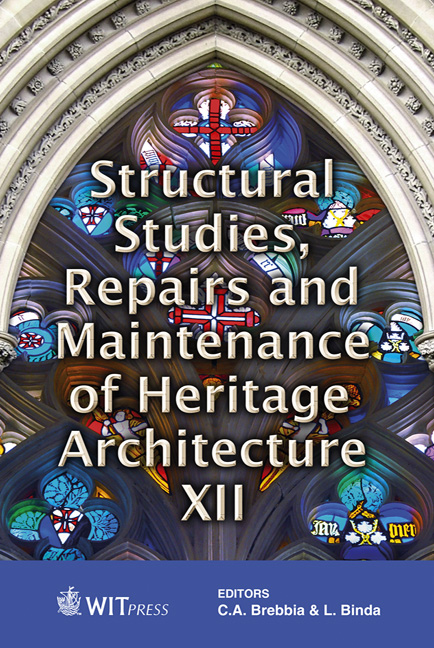Towards A Non-destructive Methodology To Distinguish Wrought Iron From Mild Steel In 19th Century Structures
Price
Free (open access)
Transaction
Volume
118
Pages
9
Page Range
285 - 293
Published
2011
Size
2,721 kb
Paper DOI
10.2495/STR110241
Copyright
WIT Press
Author(s)
I. Wouters, I. De Graeve, D. Van de Velde, M. de Bouw & Q. Collette
Abstract
During the 19th century various new construction materials became available in a short time. This paper deals with the quest for a methodology to differentiate wrought iron from mild steel by using a combination of several onsite nondestructive testing instruments. A mobile Vickers hardness tester and an optical microscope were used to determine the hardness and analyze the microstructure after onsite polishing and nital etching of historic wrought iron and mild steel structures. The historic specimens were also tested in a destructive way (tensile test) to obtain values for the mechanical properties and relate these values to the NDT results. Although the hardness measurements showed very large scatter, a trend in the measurements could be defined: large variations in local hardness measurements are a clear indication of wrought iron, which can be explained by the inhomogeneous micro-structure. Low variation in hardness is typical for mild steel. In the latter case a conversion from hardness to tensile strength is possible. The obtained dataset, coming from different Belgian structures dating from 1895 to 1905, is compared to datasets originating from the UK and US in order to position the Belgian historical iron alloys within a larger international context. Keywords: hardness test, wrought iron, mild steel, metallography, NDT.
Keywords
hardness test, wrought iron, mild steel, metallography, NDT




